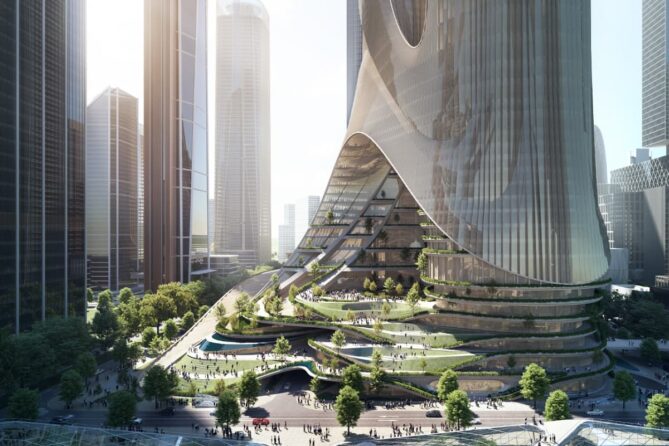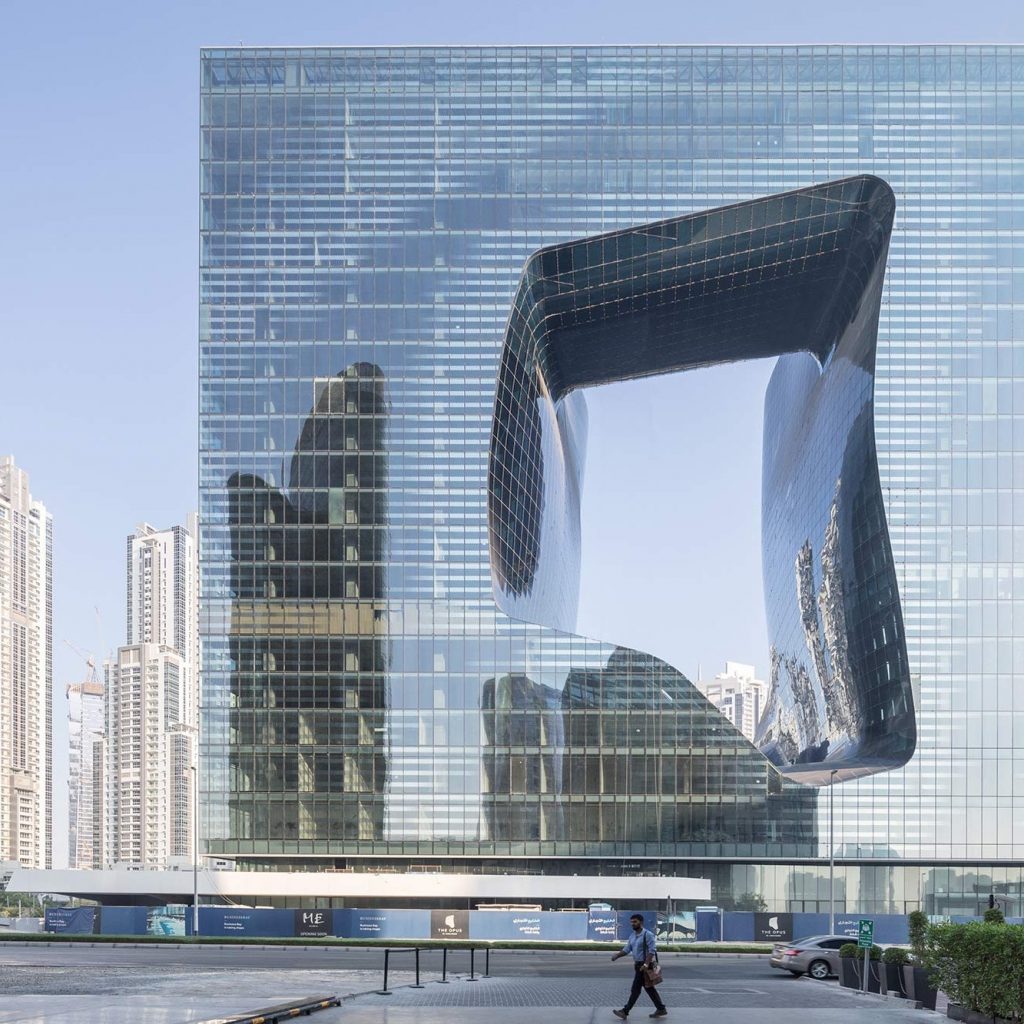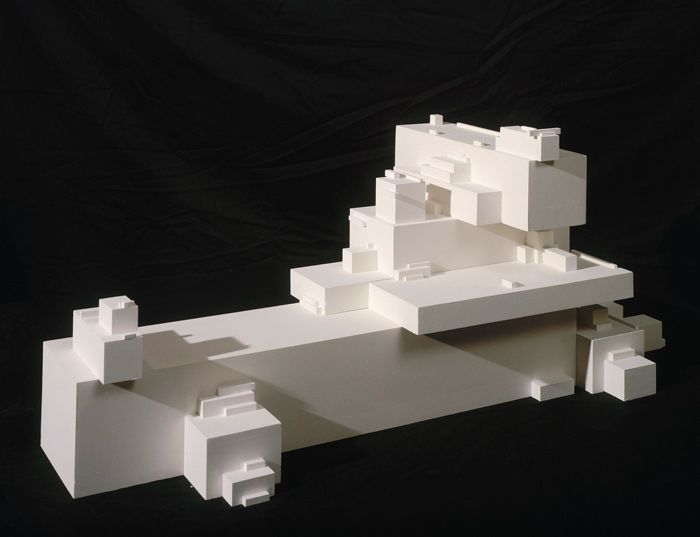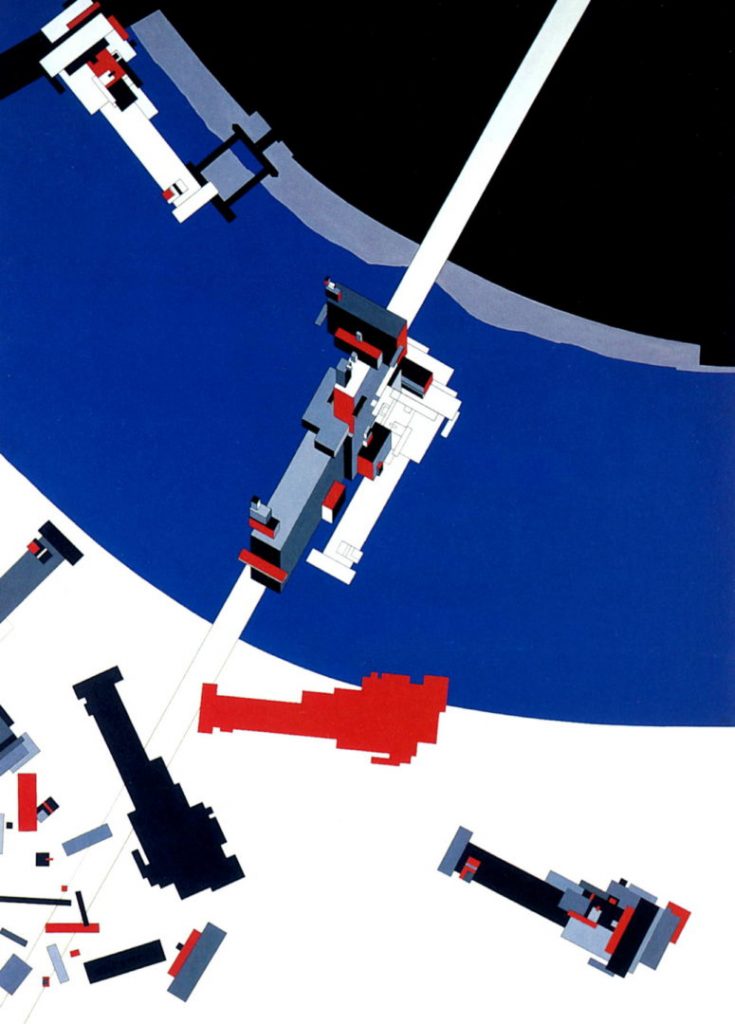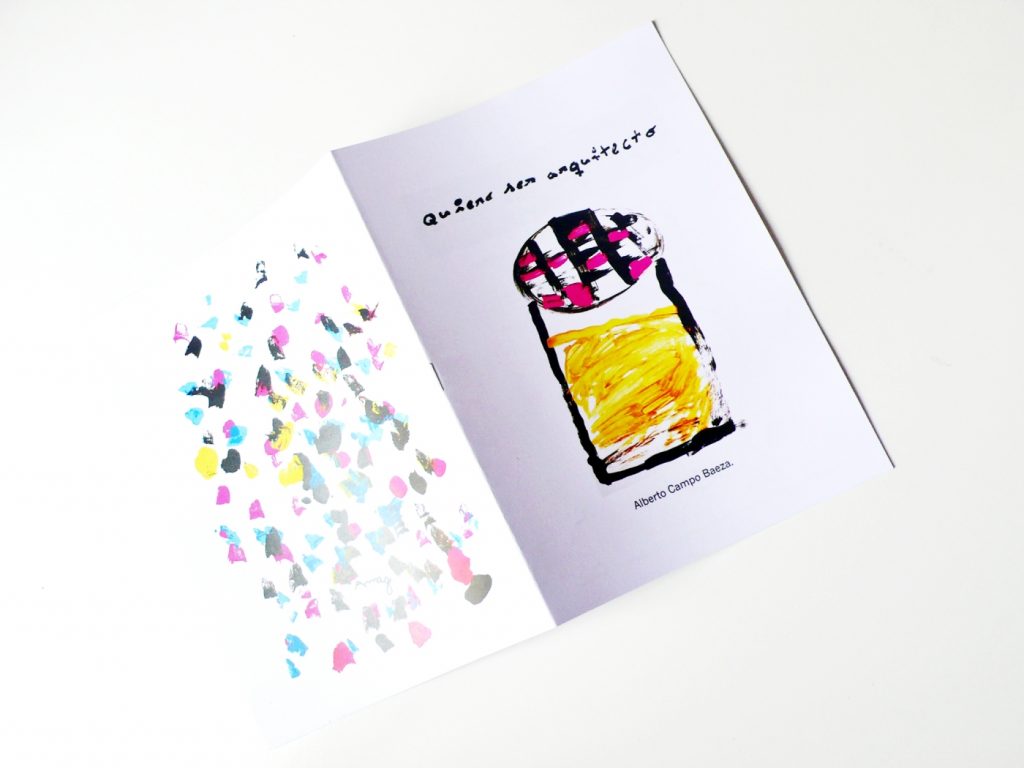STEP 1: MEET AN ARCHITECT
ZAHA HADID
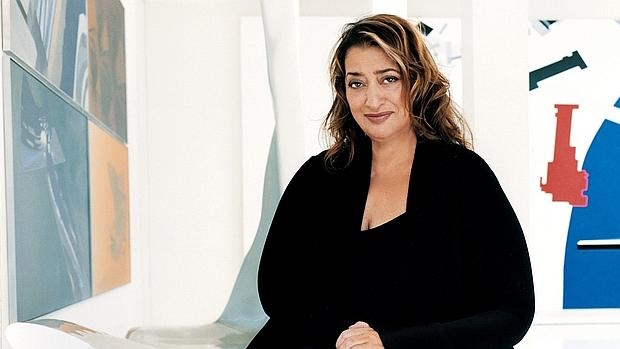
When i first read the task, i was so excited to start writing , but when i knew that i had to choose ONE architect only, i found myself in a very complicated situation. There are so many architects worth talking about i could mention Le Corbustier, Frank Lloyd Wright, Antoni Gaudi, Leoh Ming Pei…. and so on.
But being a young woman aspiring to become a successful architect, i decided to choose one of the most influential architects of her time, yes i said her, i chose to talk about my favorite female architect “Zaha Hadid”.
Zaha Hadid was born the 31 of october 1950 in Bagdad, she’s a iraqi-british architect and a urbanist, she was the first woman to win a Pritzker Architecture Prize. Her buildings included the Heydar Aliyev Centre Baku, Azerbaijan, and the MAXXI museum of contemporary art and architecture in Rome
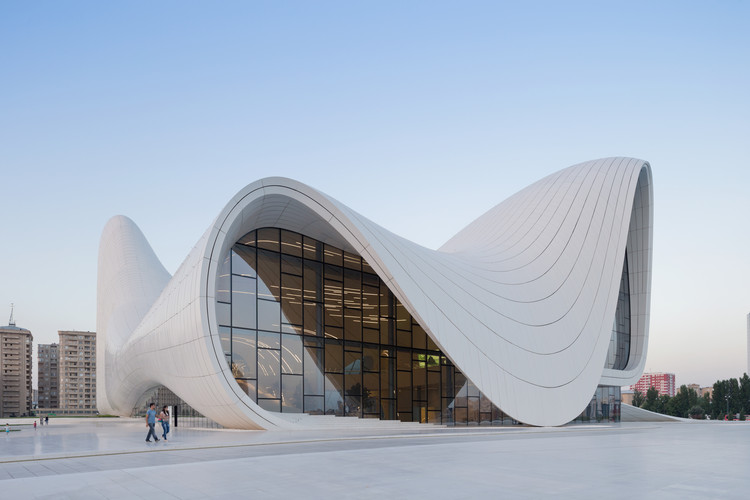
Heydar Aliyev Centre Baku 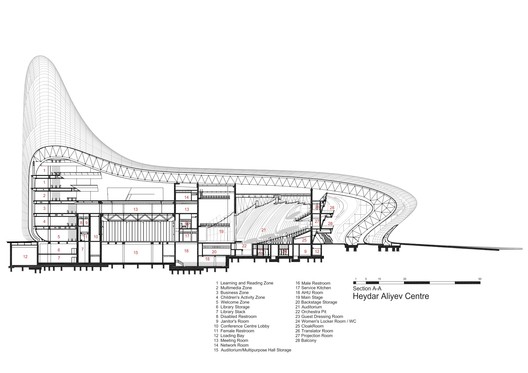
section AA 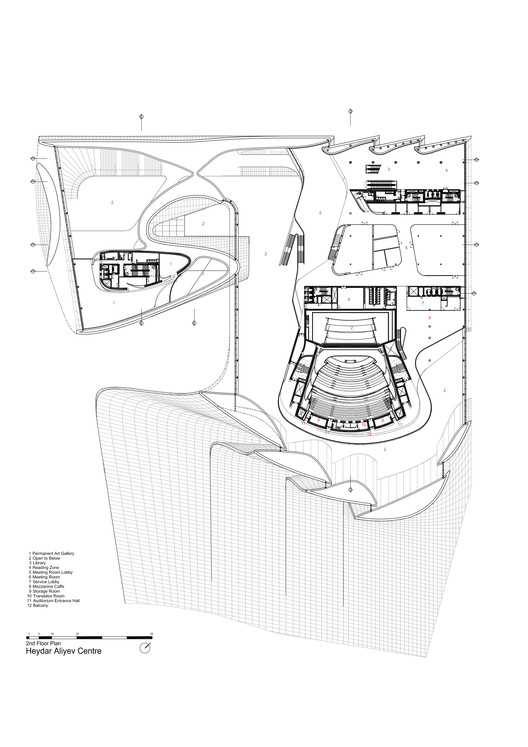
2nd floor pan
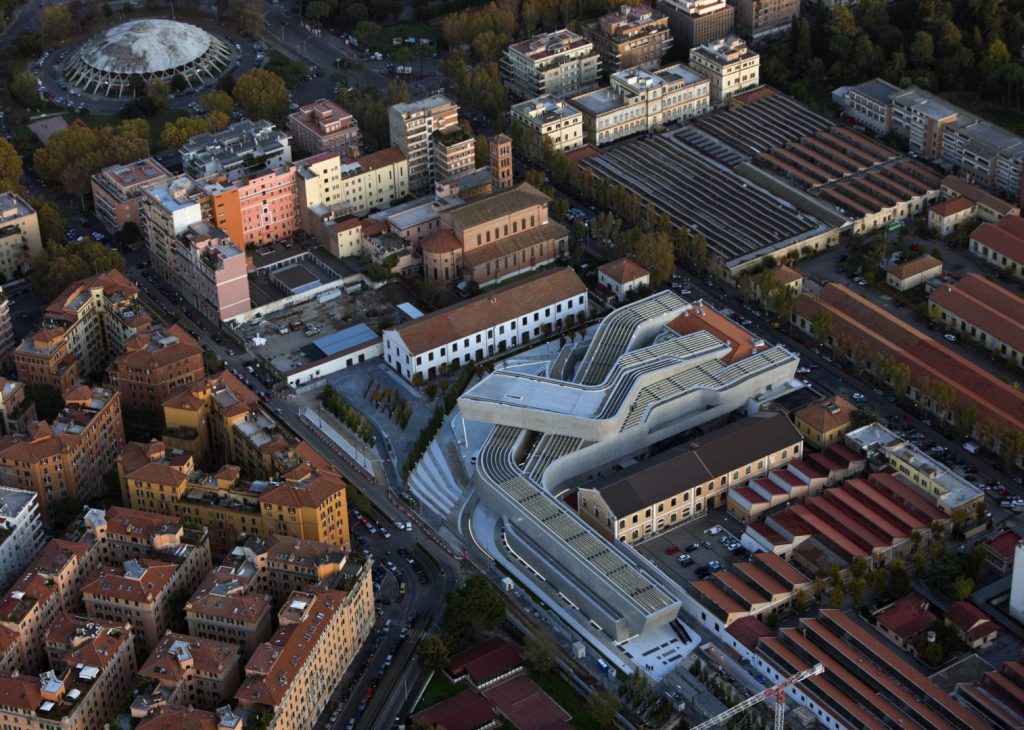
MAXXI museum, Rome 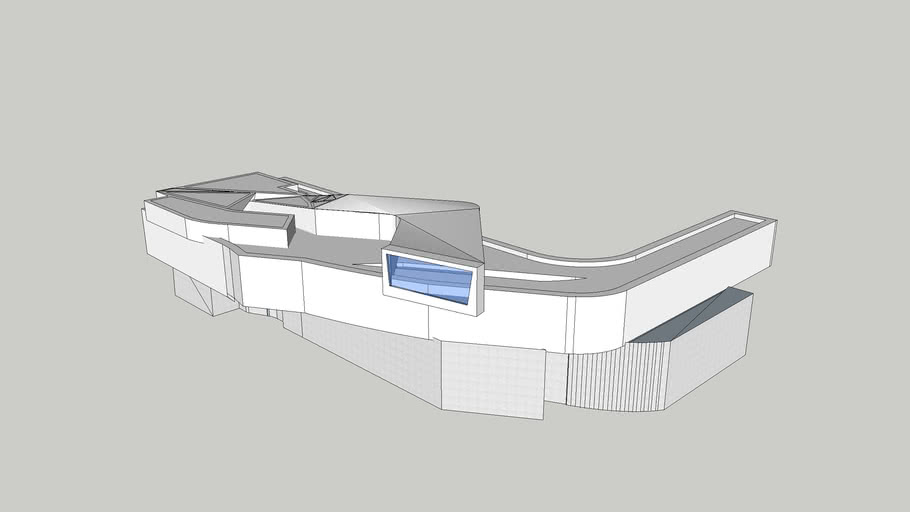
3D representation 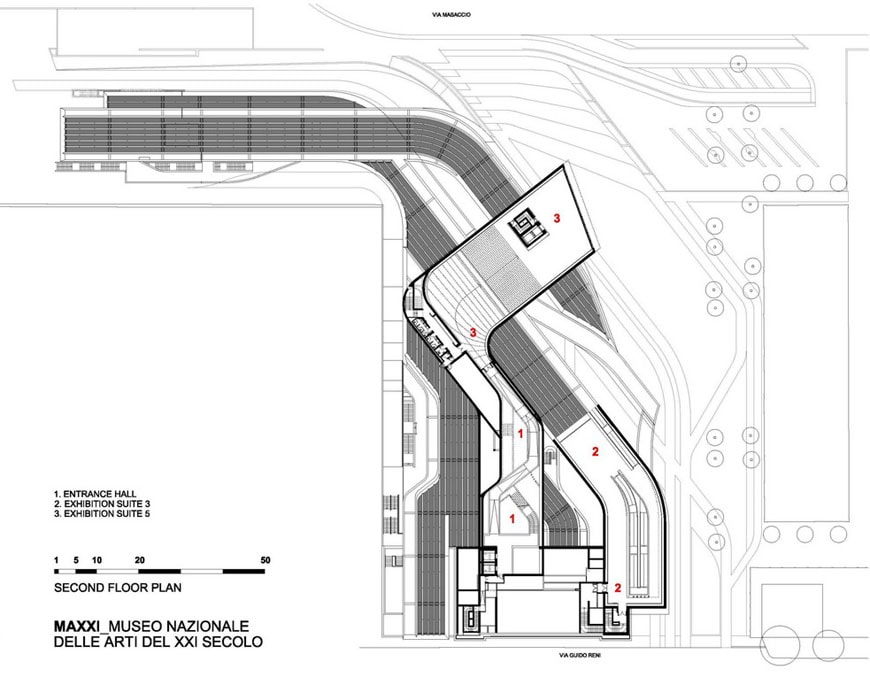
2nd floor plan
BIOGRAPHY
Childhood
Zaha Hadid was born in Baghdad, Iraq during a period of prosperity in which the government chose to invest in modernizing the city’s architecture. Her childhood saw the completion of buildings by such iconic architects as Frank Lloyd Wright and Le Corbusier. Hadid’s father Muhammad al-Hajj Husayn Hadid, was a wealthy industrialist and politician, who contributed to this progressive government impetus. Her mother Wajiha al-Sabunji was an artist.
On account of the influence of her high-achieving family, Hadid said, “there was never a question that I would be a professional.” One of her two older brothers Foulath Hadid claimed she could have become the first Iraqi astronaut. However, by the age of eleven, Zaha Hadid decided that her future lay in architecture. Her parents supported her ambitions and encouraged her to design some of the interiors in their home.
Hadid’s family traveled frequently throughout her childhood, and she received a multi-cultural, international education.
Education and Early Training
Hadid attended the American University in Beirut, Lebanon where she earned a bachelor’s degree in mathematics. In 1972, she moved to continue her studies at the Architectural Association in London, which was a center of progressive architectural thought at that time. There, she studied under Rem Koolhaas, Elia Zenghelis, and Bernard Tschumi, who all recognized her talent. Zengehlis praised her “spectacular vision” and her ability to see the bigger picture ahead of the smaller details in her designs.
In her fourth year at university, Hadid designed a hotel for the Hungerford Bridge on the River Thames in London, known as the Malevich Tektonik. Kazimir Malevich’s Suprematist paintings of geometric forms inspired the radical project that revealed Hadid’s fearless way of challenging the status quo.
Hadid graduated in 1977 with a Diploma Prize. At the ceremony, Koolhaas described the architect as “a planet in her own orbit.”
Throughout her professional practice, Hadid continued to paint, using abstraction as a tool to develop new designs. She explained, “I found the traditional system of architectural drawing to be limiting and was searching for a new means of representation.” This later on informed her 1982 competition-winning proposal for The Peak, a mountainside leisure center in Hong Kong. The project marked her debut into the limelight as a formidable architect (despite it never being built), and she became known for her creative and ambitious ideas.
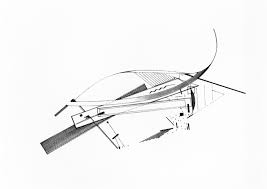
sketches of the project 
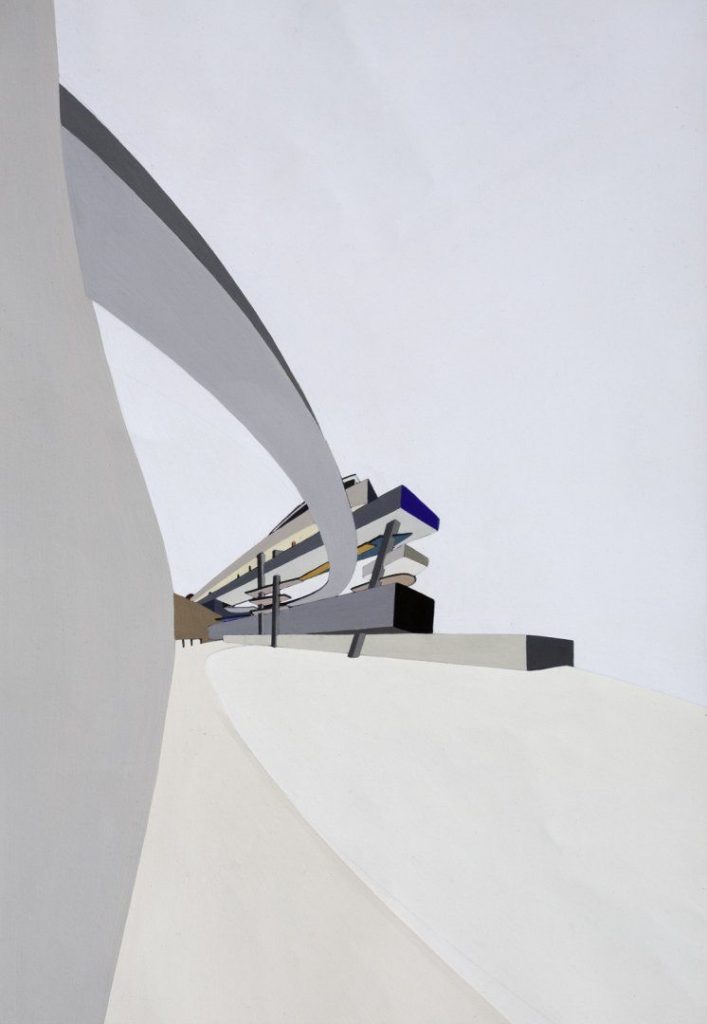
Mature Period
In the absence of built work, Hadid established her reputation through her drawings, paintings, and by teaching architecture internationally at schools including the Architectural Association, Harvard Graduate School of Design, Cambridge University, and Columbia University. She also dabbled in furniture, interior, and set design. Most significantly, her artwork was featured in the 1988 exhibition “Deconstructivism in Architecture,” curated by Philip Johnson and Mark Wigley at New York’s Museum of Modern Art.
While her works were significantly admired, they were deemed too radical for construction. In fact Zaha Hadid struggled to understand the client’s unwillingness to take on the ambitious design, insisting her project “could easily be done.”
Although Hadid herself never identified as a Deconstructivist, she retained an interest in its sculptural architecture made up of interconnecting spaces, characterized by dramatic angles, throughout the next decades. Her former tutor Zenghelis commented, “We called her the inventor of the 89 degrees. Nothing was ever at 90 degrees“.
Without compromising this bold style, in the 1990s Hadid began to transform her reputation as a “paper architect” to a building architect. Her first successfully realized project was the Vitra Fire Station in Weil am Rhein, Germany (1989-92). This was followed by more work in Europe, including a housing project in Berlin, exhibition spaces in London’s Millennium Dome (1999), and for Weil am Rhein’s horticultural festival (1997-99). The architect later referred to this formative period as “… the years when I didn’t sleep for four nights in a row, or weeks … It was a very exciting time.”
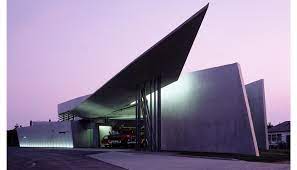
Vitra Fire Station, Germany 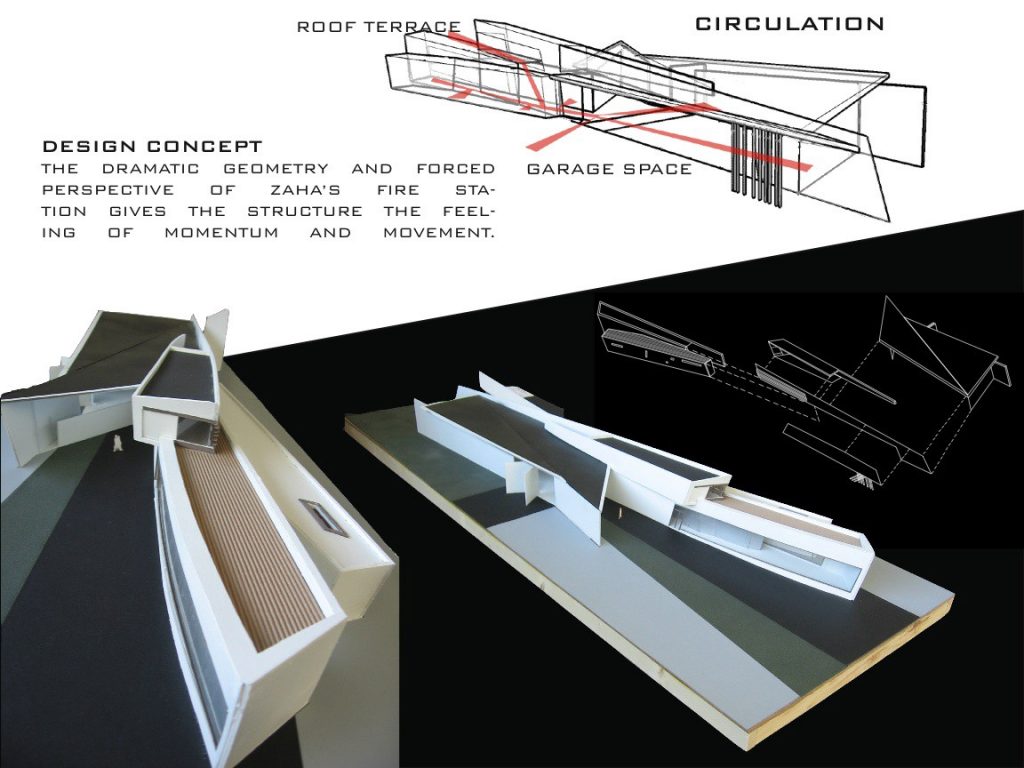
plan of the Vitra Fire Station
The construction of two further projects in the late 1990s confirmed to her colleagues and clients that Hadid’s designs were feasible, notwithstanding their ambition. These were the Rosenthal Center for Contemporary Art in Cincinnati, Ohio. The New York Times called the former the “most important American building to be completed since the Cold War.” It was not only Hadid’s first American project, but also the first American museum designed by a woman.
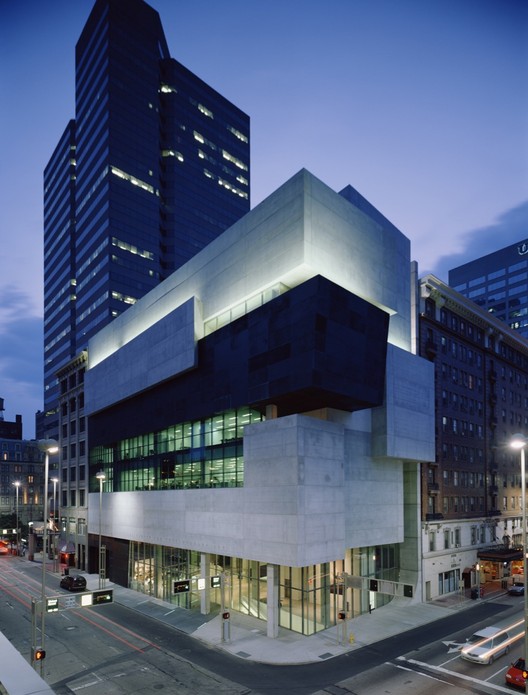
Rosenthal Center of Contemporary Art, Ohio 
Interior Rosenthal Center (1) 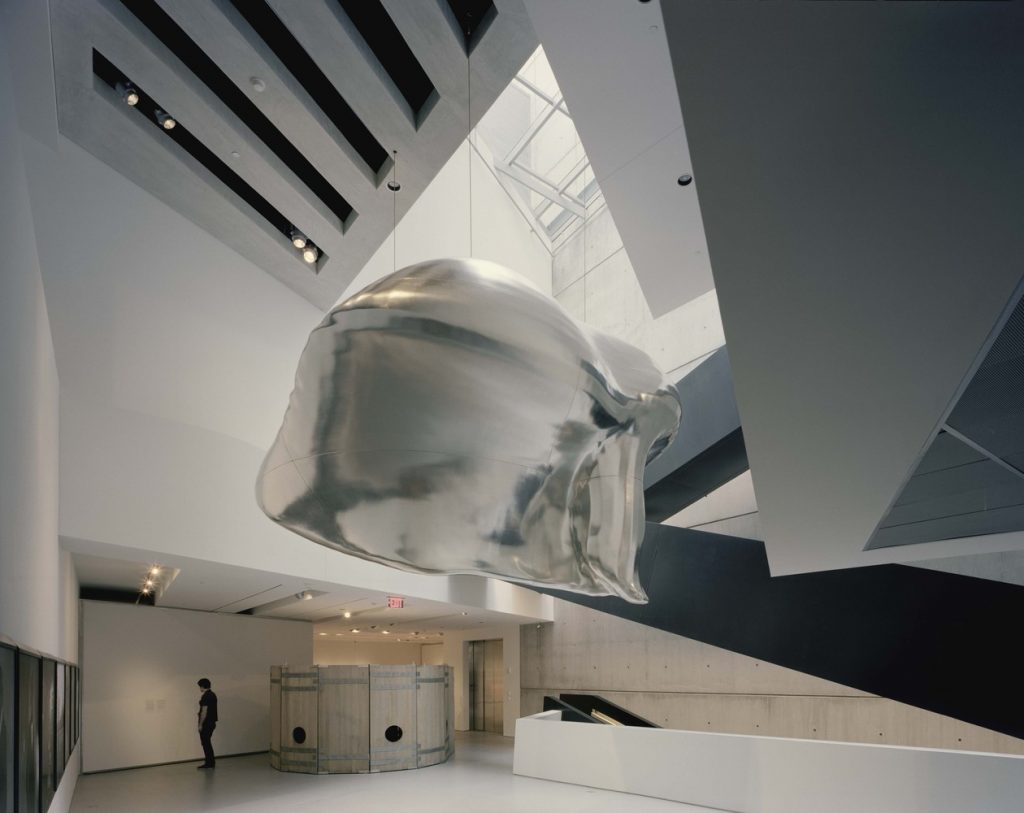
Interior Rosenthal Center (2)
A year after the completion of the art museum, Hadid was awarded the Pritzker Prize, widely considered to be the most prestigious architectural award. The president of the foundation, Thomas Pritzker, noted, “Although her body of work is relatively small, she has achieved great acclaim and her energy and ideas show even greater promise for the future.”
Late Period
Having received recognition for her work, Hadid used her high profile to push even more ambitious designs. The first of these in a new style was the Phaeno Science Center in Wolfsburg, Germany (2005), which, by eschewing horizontals and verticals, what made her the pioneer of a new approach called Parametricism.
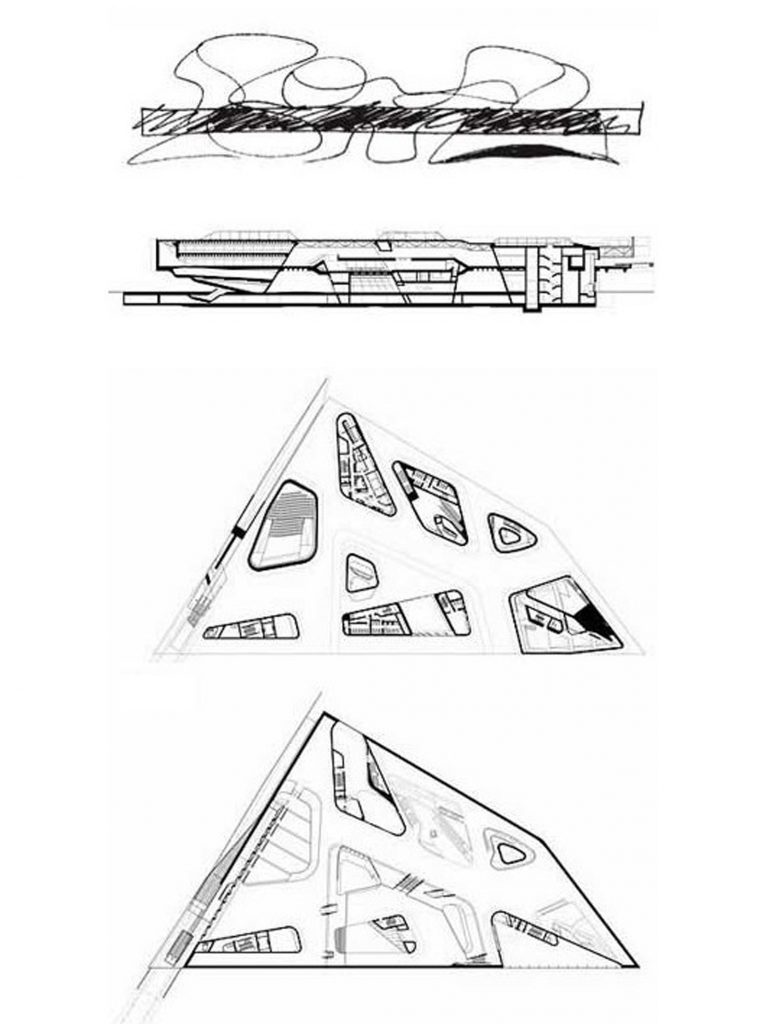
SKetches via google images 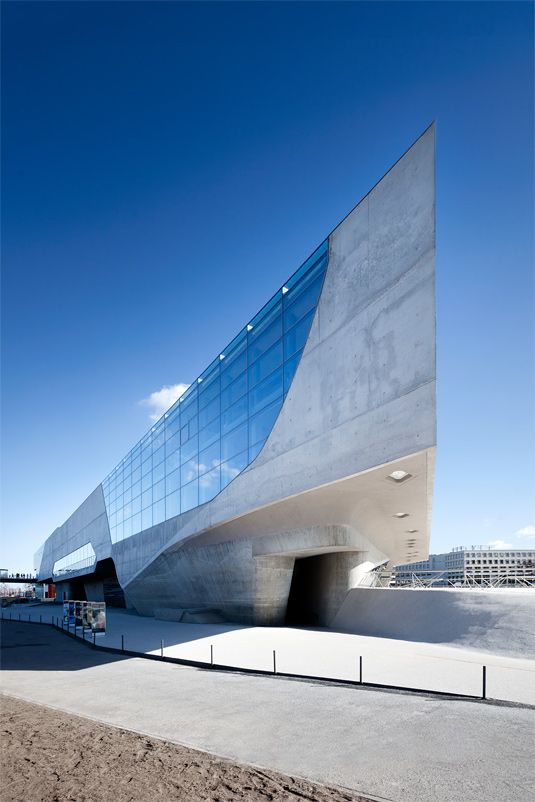
Phaneo Science Center, Germany
According to Schumacher, Parametricism “succeeds modernism as a new long wave of systematic innovation.” It prompted a stylistic shift in Hadid’s work, away from the jagged Deconstructivism for which she was previously known. The MAXXI museum of 2010, which was awarded the Stirling Prize, is one of her last works in the former style, while her design for the Heydar Aliyev Center in Baku, Azerbaijan in 2012 is characterized by the sweeping, curving forms of Parametricism.

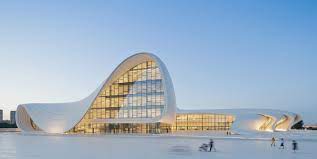
The Grand Théâtre de Rabat is one of her works, and as a moroccan i can’t be but proud to say that an important architect such as Zaha Hadid designed it in my city back home. Perhaps what i like about this building and her works in general is the importance she gives to details.
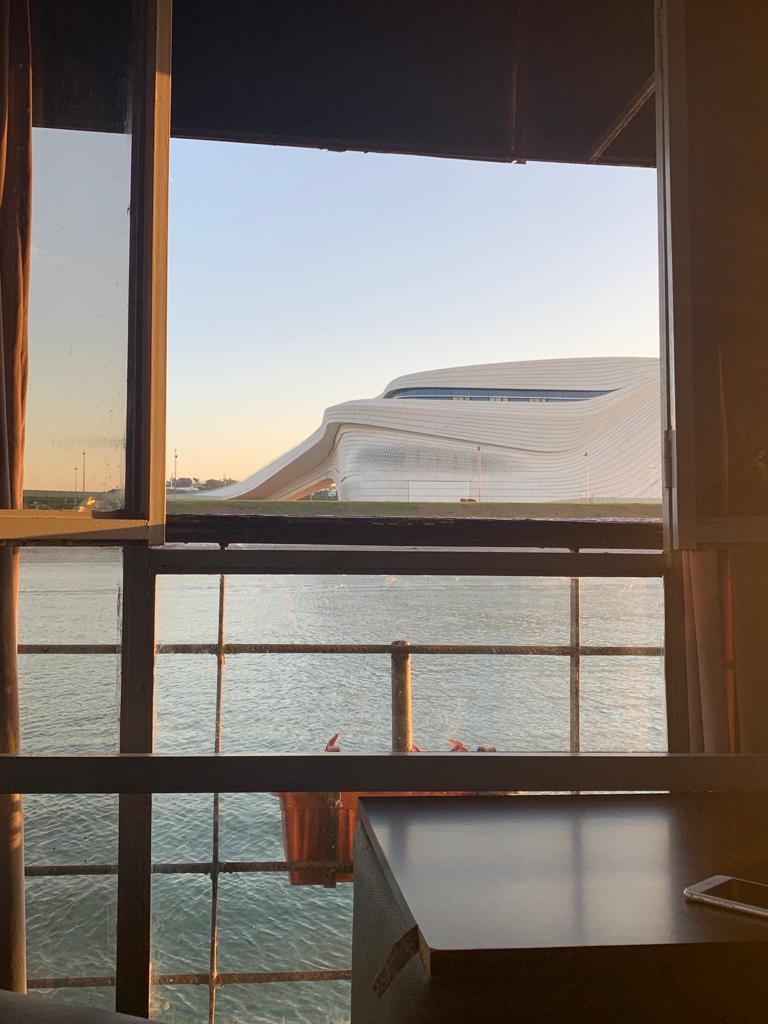
A picture that i took of Grand Théâtre 
Grand Theatre, Rabat 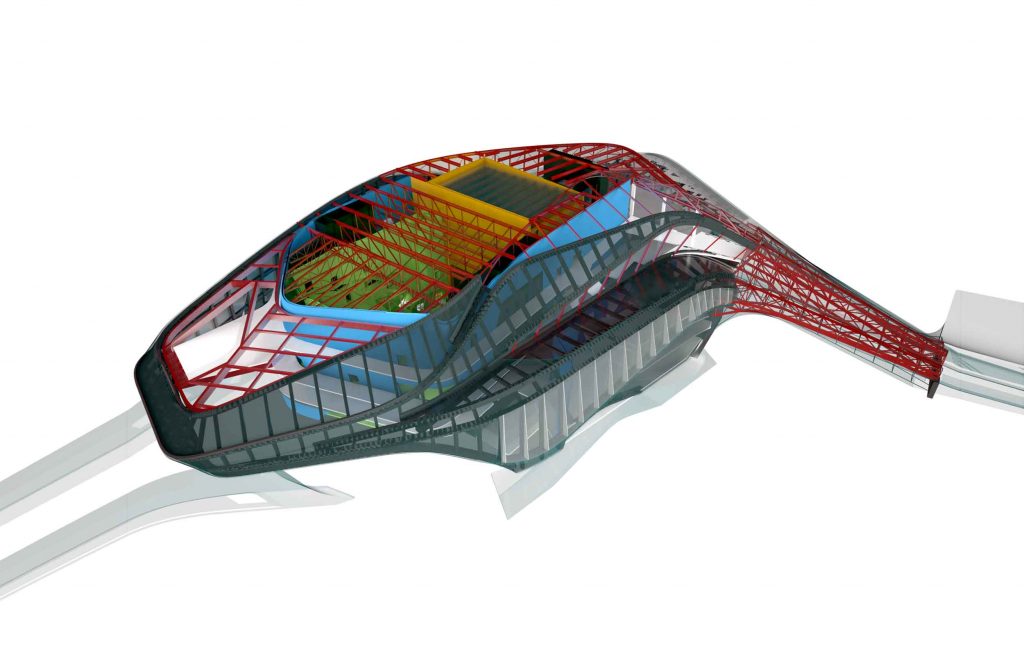
Constructive details
In 2016, Hadid died suddenly from a heart attack while being treated for bronchitis. She had decided not to have a family of her own and was entirely dedicated to her career. Speaking of her single-mindedness, she said that, “If [architecture] doesn’t kill you, then you’re no good … you have to go at it full time. You can’t afford to dip in and out.” Some, such as the journalist Harry Mount, have described her professional devotion as “narcissistic.”
The Legacy of Zaha Hadid
Hadid has been described by The Guardian as the “Queen of the curve,” who “liberated architectural geometry, giving it a whole new expressive identity.” Although she did not identify as part of a particular school, the terms Deconstructivist, Parametricist, and Abstractionist have variously been used to describe her work. Pritzker Prize jury chairman, Lord Rothschild, described her as, “unswerving in her commitment to Modernism. Always inventive, she’s moved away from existing typology, from high tech, and has shifted the geometry of buildings.” Likely influenced by her parents’ progressive outlook, Hadid has, since her student days, “believed in progress and in creativity’s role in progress” and has challenged traditionalism.
Upon her death in 2016, Hadid’s studio reported, “Zaha Hadid was widely regarded to be the greatest female architect in the world today,” begging the question of the relevance of her gender to her achievements. Hadid resisted typecasting as a female architect or an Iraqi architect for her own advancement, but was keen to reassure others that “they can break through the glass ceiling.” Her commitment to encouraging younger professionals also came across in her teaching career. Once named among the world’s highest paid architects, as well as an investor in property, restaurants, cosmetics, and fashion, many admired Hadid for her business acumen as well as her architectural ability.
Today, the Zaha Hadid Architects firm remains to carry out her legacy to create transformative spaces.
My favorite quotes of hers would probably be the following ones:
There are 360 degrees, so why stick to one ?
ZAHA HADID
Being flexible and open to new methods is one of the most important charateristics that a person should have, especially when it comes to architecture. Many times, as architects, one can find himself in an impass, in those moments he should be able to find alternatives -the 360 degrees- to achieve his goals.
Achitecture is like writing. You have to edit it over and over so it looks effortless.
ZAHA HADID
I really admire the contrast of this quote. As i identify myself a perfectionist, i couldn’t relate more to what Zaha said, indeed to reach an “effortless” perfection, working it over and over, seeing from each and every persperctive and accepting critisism makes one’s work special and unique.
Your success will not be determined by your gender or your ethnicity but only by the scope of your dreams.
ZAHA HADID
As a foreign female architecture student, this quote describes my situation. it gives lots of hope and motivation. 😉
BIBLIOGRAPHY:
https://www.theartstory.org/artist/hadid-zaha/life-and-legacy/
http://blogbutikbymerav.blogspot.com/2015/03/quote-13-zaha-hadid.html
https://quotefancy.com/zaha-hadid-quotes
https://medium.com/@shawnvictor/vitra-fire-station-the-phoenix-of-architecture-11aead623fa3
https://www.archdaily.com/786968/ad-classics-rosenthal-center-for-contemporary-art-zaha-hadid-architects-usa/572ce5b7e58ece74ca000099-ad-classics-rosenthal-center-for-contemporary-art-zaha-hadid-architects-usa-photo
https://www.moroccoworldnews.com/2017/07/222763/rabats-grand-theater-open-early-2019
MAXXI, Museo Nacional de Arte del Siglo XXI de Roma
https://www.floornature.es/zaha-hadid-heydar-aliyev-center-baku-azerbaijan-9049/
STEP 2: “QUIERO SER ARQUITECTO” Campo Baeza
A beautiful book indeed !
In his book, Alberto Campo Baeza analizes what “being an architect” is really about, all in a very simple way.
The book is destined to future architecture students, the reason why Campo Baeza uses a clear vocabulary, colors and some drawings -that are not perfect at all- as a way to motivate the readers to choose (or not) this career.
To most people an architect is a persons that draws lines, plans but no more. The reality is far different, Alberto considers that an architect is a creator, a thinker, a builder, a dreamer, an artist all at once but also somehow a doctor, a cook, and a poet 🙂
He also mentions the keys to be a good architect: have the sense space and light as most important features.
Campo Baeza also believes that the most important subjects of architecture studies is the PROJECTS, the study of STRUCTURES to conceive, HISTORY to understand the evolution of the human in parallel with the “space” and finally CONSTRUCTION to understand how materials work and how to join them in perfect harmony.
He gives recommendations and tips like to start drawing, takinf pictures, thinking, reading… all the ingredients to start the career firmly knowing exactly what to expect.
Campo Baeza concludes his analisis saying that one should study architecture because it makes him/her happy, and that BEING AN ARCHITECT IS WORTH ALL THE SACRIFICES.
